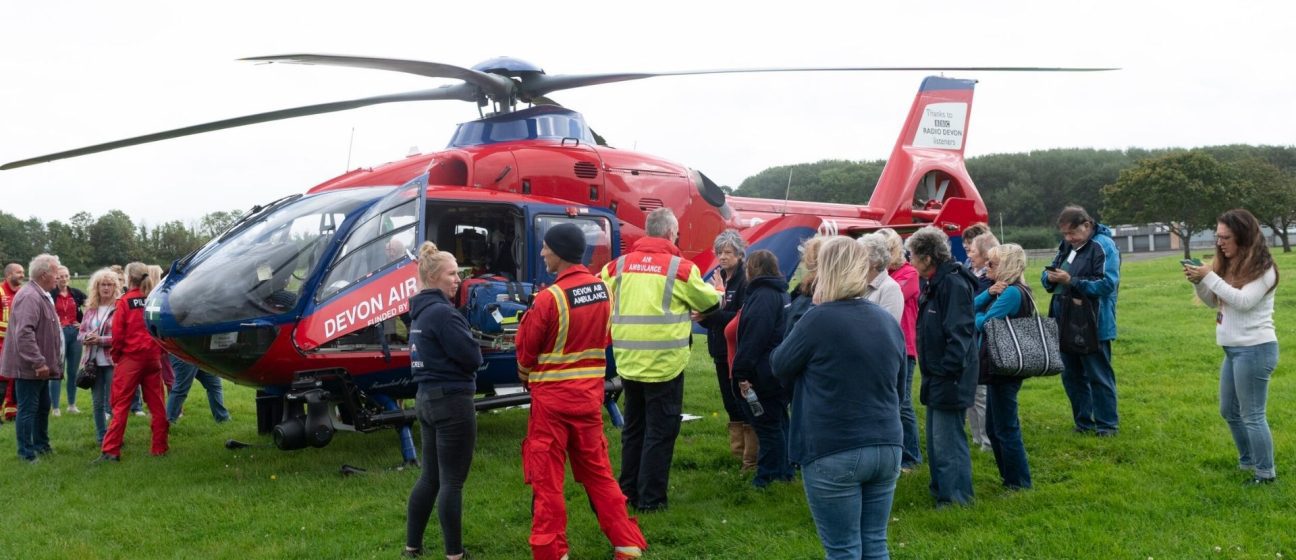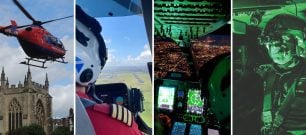
Crew and public safety is central to every mission. Paramedic, Aaron Bushnell shares operational insights.
Our crew prioritises safety when taking off and landing at an incident. Safety for the patient, the crew, our aircraft and members of the public, are all assessed when preparing to enter or leave a site.
But did you know that you can help keep everyone safe? Our operational team has assembled some tips about how best to behave when our aircraft is circling overhead or attempting to take off.
Waving 'here I am!'
Lots of people wave at our aircraft, which we love! So, if you know our team are on the way to assist you or someone you are with, please use something bright (such as a high visibility jacket) to stand out from those who are simply waving in greeting.
Clear the area
If you are in an open area and see our aircraft above, our team has likely identified it as a suitable landing site. You can help us by picking up your belongings, including small loose items, and lowering any items which can be caught by the wind (umbrellas, tents, gazebos are particularly common at a beach for instance) and moving these to the sides of the anticipated landing area to stop these flying about. Please make sure dogs are kept on leads.
Don’t underestimate the downwash
Our aircraft may look small, but the rotors create powerful downwash which will blow items around. We’d advise you to stand as far away as possible, turn away from the aircraft and cover the eyes of children or dogs. It may seem to be a sensible choice to stand beneath a tree, however on occasion branches can get blown down.
Stay back
Once our aircraft has landed, the clinical team will take their equipment and make their way to the scene whilst the rotors are still running and before the pilot has shut the engines off. This is when the rotor blades are the most dangerous. Once the aircraft is safe and if the situation allows, the pilot will get out of the aircraft and invite you to approach. Please never approach unless very clearly invited to do so by the pilot.
Saying hello to our pilots
We understand how important it is that the public get to speak to our team, take photos and look around the aircraft. If the pilot invites you over, please take this opportunity to take photos, ask questions and peek inside the aircraft, but please do not enter. Please don’t touch any of the sensors hanging off the aircraft as these can break easily, and never approach the tail of the aircraft.
Time to go!
The clinical crew will regularly speak to the pilot to supply updates. If the pilot asks everyone to leave, it is likely because a patient is going to be taken to hospital in the aircraft. Please show your respect by leaving the area quickly and retreating to a safe distance, as far away as possible. This will help protect the patient’s dignity, but it will also keep you safe when the aircraft takes off.
The hopefully never event
On the rare occasion an aircraft experiences a fault when taking off, the pilot will land again in the same place it was previously situated. Please stay clear until the aircraft has departed.
Thank you from the operational team for helping to keep you, your family, the crew and our patients safe!
It’s thanks to the communities we serve that we continue to deliver time-critical care to patients across Devon and beyond. We welcome your continued support.



